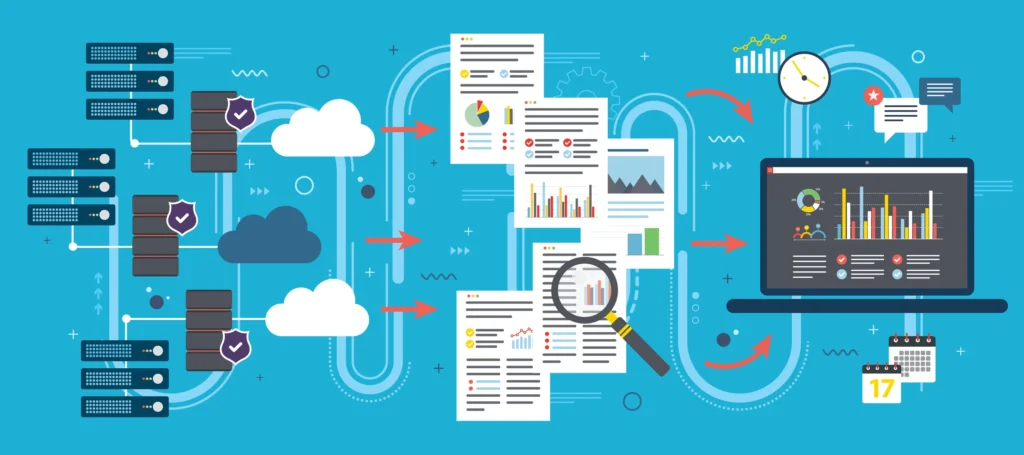Read Time:
2 Min
The lack of time and resources to adequately manage the revenue cycle, typically leads providers to issues like poor cash flow, aged receivables, and increased denials.

You may experience issues like:
Lately, market issues confirm this as well. This chart shows the issues providers are receiving, and the reasons why it could be happening.
| 5-10% of AR is lost because the payor never processed it | Unprocessed claims, missing documentation, and denials |
| Underpaid claims are not properly appealed | In-network, out-of-network and medicare |
| 30-40% loss in Individual out-of-network claims | No data, no time, no expertise |
| Billing systems geared towards billing, not collections | AR tracking done in spreadsheets, where claims slip through the cracks |
| Lack of Reporting | KPI analysis, staff productivity, claim status |
All these holes in payer collections can add up to a gigantic losses in revenue for providers.
The recurring theme of our payor reimbursement solution is every claim, every time. Oftentimes, AR companies want to write off AR balances quickly. But we’ve found that one of our biggest keys to success is to make sure each one of your claims is properly monitored, processed, and reconciled so your money’s in the bank.
How can you take this information and apply it to your own practice? Here are the 6 keys you need to know:

The first key is understanding payer tactics to reduce reimbursements.
Part of our “secret sauce” is the depth of our knowledge of how out-of-network reimbursements work from the insurance company’s perspective. Our team comes from every major payer and vendor, and we handle over $1.3 billion in out-of-network bills each year.
Take it from us: to be successful, it’s important to know…
We like to say we see more out-of-network claims than anybody else in the country. We know how to work these claims because we’ve seen them before. Take our word for it!
Many providers encounter issues with their revenue cycle because it’s a manual, time-consuming process. They spend too much time identifying issues with AR rather than fixing them because they have to individually check every account’s 835 data. They resort to spreadsheets or restrictive software to keep organized And they have to make multiple calls on each account just to get the status.
This limits your capabilities, visibility, and revenue potential. Instead, invest in industry-leading technology. Here’s an example of the technology we offer, and why it’s so critical you move away from those manual processes.

CRXIS, our business intelligence engine, serves as one of the largest out-of-network databases in the industry. No other revenue cycle company has as much information as we do.
We’ve developed this technology to enhance payor reimbursements by automating A/R Follow-Up, maximizing out-of-network reimbursements, and providing analytics & reporting.
CRXIS allows us to:
And that’s just scratching the surface. Can your billing company or in-house billing team do that?
We found that when we follow behind another billing company or inhouse billing, there are many missed encounters which can lead to 5-10% missed revenue in AR follow up alone. So it’s important to put multiple checks in place to ensure that every single claim has been followed up on, processed by the insurance company, and there is money in the bank.

Here’s an example of a common mistake made by many providers when they are not taking the time to capture each encounter accurately and failing to reconcile billed claims to payment.
| Daily billed claims | 20 |
| Claims processed successfully | 17 |
| Claims not processed | 3 |
| Lost revenue/encounter not charged | $3,000 |
| Total lost daily revenue | $9,000 |
| Total lost monthly revenue | $180,000 |
In this example, the provider billed 20 encounters and 17 of them were successfully processed by the insurance company. But because the provider did not diligently follow up, the other 3 encounters were never processed by the insurance company. If each of these encounters were worth $3,000, this would result in $9,000 of missed revenue just that day. Now think if this error occurred every day, it could result in a $180,000 loss of revenue throughout the entire month!
The point is, even missing only one charge per day can add up to significant dollars lost in the long term.
Understanding workflow is critical because the most common issues on the back end of collections are caused by breakdowns in the early parts of the revenue cycle, like clinical denials or incorrect 837 data. Workflow optimization can help with:
We’ve automated AR workflow by identifying “at-risk” accounts so an FTE doesn’t have to spend the time doing so!
We like to use the term “actionable data”. Can you identify root cause issues and solutions? Can you data mine different methodologies that improve financial performance? Can you anticipate trends or projects? Can you determine revenue impact, or how your bottom line is performing?
This information is absolutely integral to the financial health of your organization.

We can pull reports like this on a weekly, monthly, or ad hoc basis to help you make more informed financial decisions quickly & manage the cost to collect.
The issue with any billing system is they’re limited to the canned reports they provide. With Wakefield, if you are ever interested in a report our system does not have, let us know and we may be able to create it externally!
The opportunity to increase out-of-network payments is so great that it can have a tremendous impact on your bottom-line. Think about it. There aren’t a lot of opportunities to increase reimbursements rates. Contracted and fee-schedule rates are already fixed. Out-of-network is the only area left where you can increase rates and improve the bottom-line.
One of the biggest complaints we hear from providers is their billing company is holding their information hostage. Remarkably, the provider is unable to retrieve their own EOBs or reports from their billing company. Remember, this is your data, and these are your accounts. Wakefield will make sure that you have full access to all of your information.

Company
Our Locations
320 N Cedar Bluff Road, SUITE 300 Knoxville TN, 37923
Aurora, CO
Fort Morgan, CO
Eatontown, NJ
Jefferson City, MO